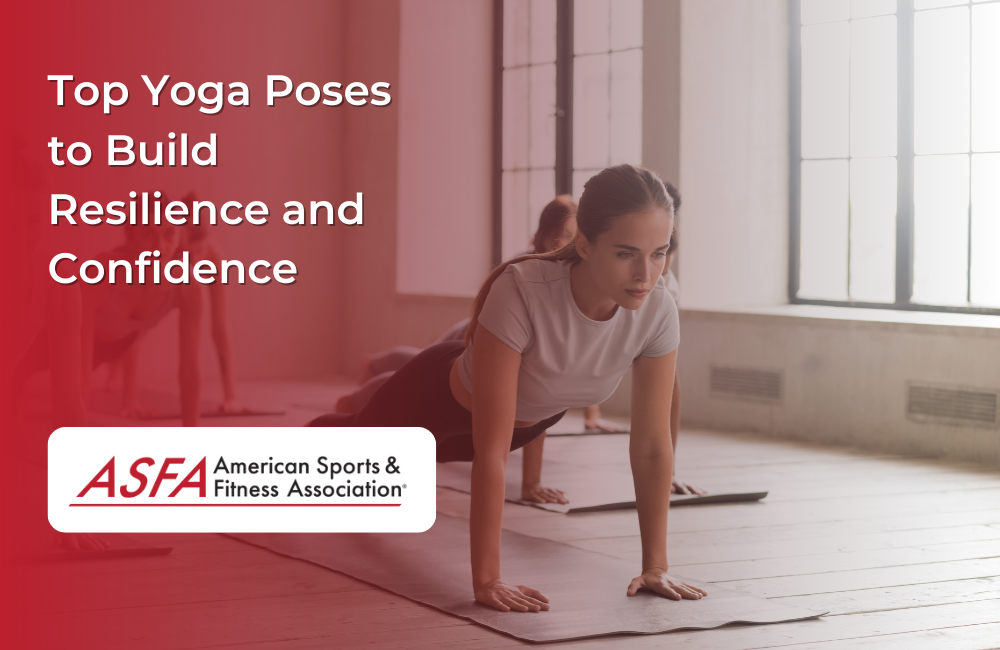How can yoga for inner strength help build inner strength? This article explores seven powerful poses that target both your physical and mental resilience. Learn how these practices can strengthen your body, focus your mind, and improve your overall well-being through yoga for inner strength.
Key Takeaways
-
Build inner strength and resilience with a strong core through foundational poses like Plank and Navasana.
-
Embrace Warrior and Chair poses to cultivate physical and mental fortitude, enhancing your confidence and stability.
-
Integrate meditation and self-care practices with yoga for a holistic approach to well-being that strengthens both body and mind.
Building Core Strength with Plank Variations
Inner strength starts with a strong core, and the Plank is one of the best poses for this purpose. It helps maintain a strong center, which is vital for overall physical strength and stability.
Forearm Plank is an effective variation, strengthening the core and activating the solar plexus chakra, enhancing personal power and confidence. To perform it correctly, keep your shoulders over your elbows and maintain a straight body line. This alignment engages multiple muscle groups, improving core functionality.
Adding Navasana (Boat Pose) to your routine can further enhance core strength. Together, these poses offer a comprehensive approach to core strengthening without high-impact exercises or equipment. Regular practice will build a robust core, supporting your physical structure and inner resilience.
Warrior Poses for Inner Power
Warrior poses are excellent for cultivating inner strength, embodying power, steadiness, and confidence. Warrior II (Virabhadrasana II) enhances hip and chest flexibility while promoting proper arm extension. It strengthens the body and improves mental focus and grounding.
Warrior III (Virabhadrasana III) demands strong leg and core engagement for balance. It fosters inner strength and mental clarity, making it a powerful addition to your practice. Balancing in Warrior III builds resilience through physical and mental focus, enhancing strength and centeredness.
Both Warrior II and Warrior III significantly build inner and outer strength, providing more energy. Regular practice develops physical strength and taps into deeper inner power and resilience. These poses exemplify the holistic benefits of yoga, blending physical and mental fortitude.
Chair Pose (Utkatasana) for Stability and Confidence
Chair Pose, or Utkatasana, builds stability and confidence. It involves sitting back as if in an imaginary chair, engaging your legs, core, and arms simultaneously. Practicing Chair Pose develops focus and boosts self-assurance, making it an excellent addition to any yoga class.
Proper form in Chair Pose prevents knee and ankle discomfort. Keep your knees over your ankles and distribute your weight evenly across your feet. This alignment enhances the pose’s effectiveness and ensures safe, sustainable practice.
Regular practice of Utkatasana enhances self-confidence and core strength. Holding the pose fosters stability and empowerment, translating into other areas of life. Chair Pose exemplifies yoga’s ability to build physical and mental strength, fostering inner resilience.
Tree Pose (Vrksasana) for Balance and Grounding
Tree Pose, or Vrksasana, enhances physical balance and mental resilience. It involves standing on one physical body left leg and placing the opposite foot on the inner thigh or calf, fostering stability and grounding.
Tree Pose significantly improves concentration and focus. Balancing on one leg encourages rootedness, engaging the standing leg’s strength and enhancing body awareness. This rootedness fosters a grounded mindset, making Tree Pose excellent for building inner strength and resilience.
Regular practice of Tree Pose develops physical balance and mental fortitude. Its combination of physical and mental focus enriches your yoga practice, supporting your journey towards greater inner strength and resilience.
Enhancing Upper Body Strength with Arm Balances
Arm balances dynamically build upper body strength and resilience. Poses like Crow Pose (Bakasana) strengthen the arms, wrists, and core while promoting mental focus. Balancing on your hands engages multiple muscle groups, enhancing upper body strength.
Elephant Trunk Pose (Eka Hasta Bhujasana) is another powerful arm balance, enhancing strength and flexibility. This advanced pose requires significant core engagement and upper body strength, making it ideal for those seeking a challenge.
Firefly Pose (Tittibhasana) is a challenging arm balance requiring hip flexibility and significant upper body strength. Regular practice cultivates mental resilience and improves posture, enhancing strength and confidence.
Incorporating arm balances into your practice builds physical and inner strength. These challenging poses push your limits, fostering a deeper sense of resilience and empowerment.
The Role of Meditation in Building Inner Strength
While physical strength is important, inner strength is crucial for overall well-being. Meditation cultivates inner strength by improving self-awareness and emotional resilience. Regular meditation alleviates stress, promotes tranquility, and contributes to emotional balance and mental clarity.
Techniques like mindfulness, mantra repetition, and guided imagery can be practiced in various settings, making meditation accessible to anyone. These practices foster present-moment awareness, reduce anxiety, and promote well-being. Just as physical exercises strengthen the body, meditation strengthens the mind, enhancing overall resilience.
Adding meditation to your yoga practice significantly enhances the benefits of both. Dedicating time to physical poses and meditation cultivates a holistic sense of inner and outer strength, supporting your journey towards greater resilience and inner peace.
Combining Yoga and Self-Care Practices
Integrating yoga with self-care practices provides a comprehensive approach to well-being. Yoga nidra, massage, and breathing exercises reduce stress and tension, enhancing overall health. A dedicated yoga space at home fosters a tranquil environment for relaxation and mindfulness.
Customizing your yoga routine to align with personal preferences improves engagement and enjoyment. Focusing on self-care enhances the benefits of your yoga practice, making it a vital part of your daily routine.
Regular yoga practice improves physical strength and supports mental and emotional well-being. Combining yoga with other self-care practices creates a holistic approach to health, fostering inner peace and resilience, and enhancing overall quality of life. Many individuals choose to practice yoga to further their journey towards well-being.
Summary
In summary, yoga offers a powerful means to build both inner strength and resilience. From core-strengthening planks to grounding poses like Tree Pose, each pose contributes to a holistic sense of well-being. By incorporating these practices into your routine, you’ll develop a deeper connection to your inner power and feel more confident in your abilities.
Remember, the journey towards inner strength is ongoing. By consistently practicing these poses and integrating meditation and self-care, you’ll cultivate a resilient mind and body, ready to face any challenge with grace and confidence.
Frequently Asked Questions
How often should I practice these yoga poses to see results?
To see results, aim to practice your yoga poses at least 3-4 times a week. Consistency is key to unlocking your potential and experiencing improvements!
Can beginners perform these poses?
Absolutely, beginners can perform these poses by using guidance and modifications to ensure safety. Embrace the journey and enjoy the practice!
How long should I hold each pose?
Hold each pose for 30 seconds to 1 minute, and as you grow stronger, challenge yourself to extend the duration! You've got this!
What if I experience discomfort while performing these poses?
If you experience discomfort, it's essential to check your form and make necessary modifications. Don't hesitate to seek advice from a yoga instructor if the discomfort continues; your well-being is the priority!
Can meditation alone help build inner strength?
Meditation can significantly contribute to building inner strength, especially when combined with physical practices like yoga. Embrace a holistic approach for even greater resilience!





